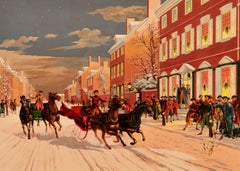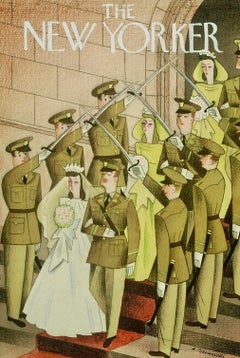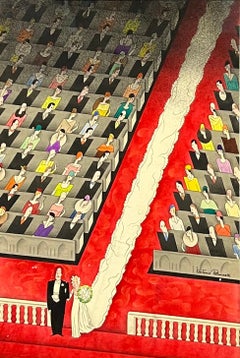Everett Henry Art
Everett Henry was an advertising artist during much of his career, which he began in the 20s, and he illustrated many advertising campaigns. Henry brought to his work a thorough academic training through study at The Art Students League of New York, the School of Fine and Applied Art, New York University and Columbia University. He also did some teaching at the School of Fine and Applied Art in New York. In 1935, Henry painted murals for the Ford Company Building at the San Diego Fair. This led to many other mural commissions, several of which he executed in collaboration with Allen Saalburg and Louis Bouché. These included decorations for 12 club cars for the Pennsylvania Railroad, designs in the Westinghouse Building, the U. S. Government Building and the Building service center, all at the New York World’s Fair in 1939–40. Henry also painted both murals and easel pictures for private collectors and is represented in the permanent collection of the Whitney Museum.
1950s Other Art Style Everett Henry Art
Board, Gouache
1930s American Realist Everett Henry Art
Gouache, Board
1930s American Realist Everett Henry Art
Gouache, Board
1950s American Realist Everett Henry Art
Gouache, Board
1930s American Modern Everett Henry Art
Gouache, Board
1940s American Modern Everett Henry Art
Gouache, Board
1930s American Modern Everett Henry Art
Gouache, Board
21st Century and Contemporary Everett Henry Art
Gouache, Illustration Board
1930s American Realist Everett Henry Art
Gouache, Board
1930s American Modern Everett Henry Art
Gouache, Board
1930s American Modern Everett Henry Art
Gouache, Board
1930s American Realist Everett Henry Art
Gouache, Board
1920s Expressionist Everett Henry Art
Gouache, Cardboard
1950s Other Art Style Everett Henry Art
Board, Gouache


